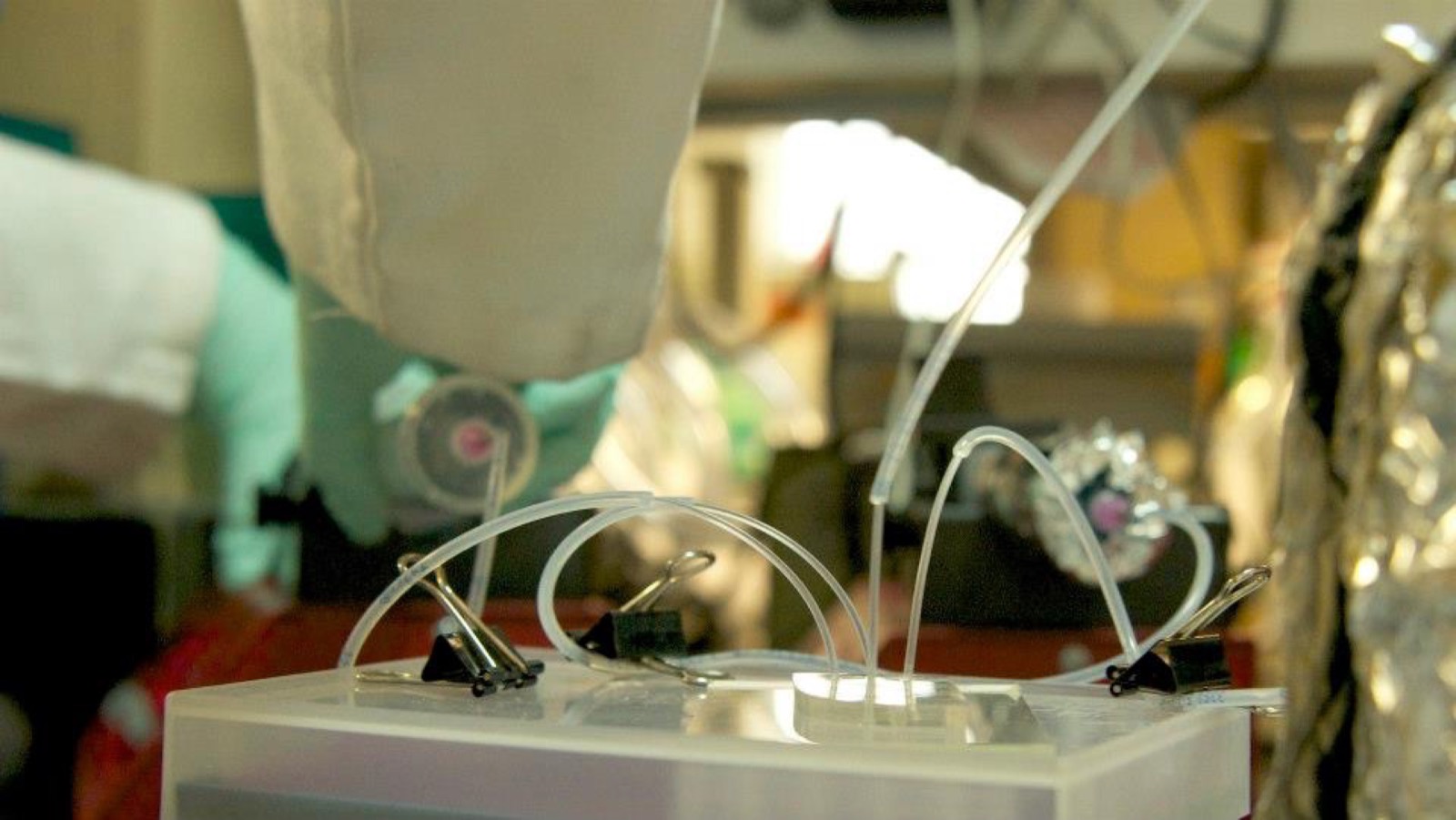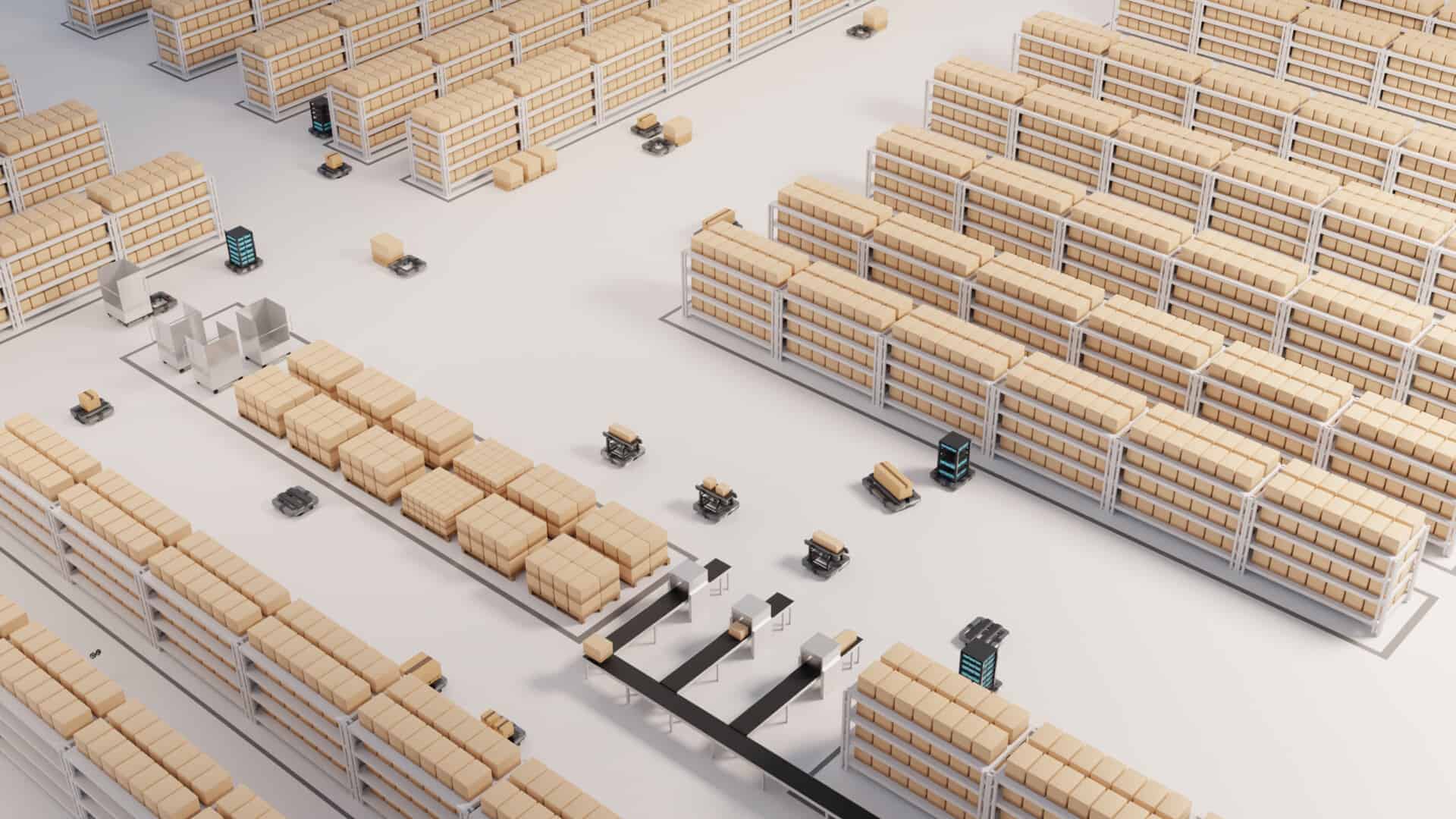
The Netherlands is busy adapting in all kinds of ways in order to deal with the corona pandemic. But are our corona measures effective at all? What are the benefits of testing? And why does a vaccine take so long to develop? Biomedical chemist Willem Mulder offers answers to these questions. And he explains how his research is contributing to a solution to the pandemic.
Medical research
For the past fifteen years, Mulder (43) has been conducting research into nanomaterials that can regulate how the immune system functions. His main focus is on the development of new treatment methods for cardiovascular diseases, cancer, and post-transplant rejection. Although his work can also be applied to many other diseases, including the novel coronavirus. But how can research into new treatments for combatting cancer and carrying out transplants be of any use in the current pandemic? In order to understand this, we need to explain Mulder’s work method.
Normally Mulder travels back and forth between New York and Eindhoven. In New York, he is Professor of Radiology and Professor of Oncological Sciences at the BioMedical Engineering and Imaging Institute at Icahn School of Medicine at Mount Sinai. In Eindhoven, he works part-time as a professor of Precision Medicine at the Eindhoven University of Technology (TU/e). Furthermore, he is co-founder of Trained Therapeutix Discovery, a company that develops immune therapies which are based on nanomaterials.
Nanotechnology
On both sides of the ocean, the work of Mulder and his fellow scientists focuses on guiding our immune system to fight diseases. “We use nanotechnology to regulate the immune response. Immune cells are produced by stem and precursor cells in the bone marrow. We take control of this production process, so to speak. This allows us to ensure that the immune system achieves what’s called a tolerant immune status when the immune system is suppressed. This is very important in organ transplants, for example, so that a patient’s body will not consequently reject a transplanted organ. The opposite is true for cancer. Then the immune system needs to be intolerant towards a tumor. In these situations, we actually want to trigger immunity,” Mulder explains.
Aggressive immune response
Mulder’s work is best understood when you keep these two scenarios in mind. In one case, you want a patient’s immune system to have a specific level of tolerance for a transplanted organ. In the other, you want to induce an aggressive immune response against tumor cells. Both scenarios can be applied to many different pathologies, including the novel coronavirus. The regulation of the immune response is crucial when dealing with SARS-CoV-2 infections. A properly functioning immune system can prevent or – in case of infection – swiftly eradicate the infection. On the other hand, the infection can cause COVID-19 disease in infected patients whose immune system is not functioning adequately. With potentially disastrous consequences. “There are plenty of parallels with COVID-19. We see many similarities between hyperinflammation in COVID-19 patients and the immune response after transplants,” Mulder continues.
Our immune system and corona
Now, about our immune system. It comprises two parts. The congenital (or non-specific) part is mainly made up of phagocytes. These are cells that can, as it were, eat bacteria, viruses, and fungi. This part of the immune system is our first line of defense and is ready to fight off an invasion of our bodies. When someone has mild symptoms after becoming infected with the coronavirus, that person’s natural immune system is perfectly capable of getting rid of the virus.
When the congenital part of the immune system is unable to get rid of an infection, the adaptive part of the immune system takes over the defense task. A virus is made up of a genetic code (RNA) that is packaged in tiny globules of lipids and proteins. Certain types of phagocytes – referred to as antigen-presenting cells – break down a virus into small molecular fragments called antigens. Cells of the adaptive immune system (lymphocytes) recognize the antigens and are thereby activated. This triggers a cascade of processes that generate a specific immunological memory where antibodies play an important role.
Consequently, those people who experience few issues after infection with SARS-CoV-2 may not be able to build up a high enough level of immunity. When the natural immune system is able to clear the infection itself, there is no strong adaptive immune response needed in order to achieve immunity.

Older immune systems
When asked why the elderly in particular are not resistant to COVID-19, Mulder answers: “Although it does happen, the amount of young people dying from this virus is statistically negligible. That may be because the immune system doesn’t function as well as it should since the number of lymphocytes in the blood declines with age. This is also often the case with people with underlying conditions. For example, the immune systems of people who are overweight, diabetic, or have cardiovascular diseases tend to age much faster. That’s why we suspect that COVID-19 patients with underlying conditions are more susceptible to the disease process spiraling out of control.”
Testing
Mulder says that it is especially important now to use tests as a means of gaining insight into whether herd immunity is being built up or not. In order to do this, it is essential to know how many people among the population have antibodies. Mulder: “Because the only people who have been tested in The Netherlands are those who have had the disease get out of hand, you tend to get a distorted picture. Now it seems as if it is mainly the elderly who are infected. We want to know exactly how the disease progresses in people who have no noticeable symptoms. So far, our policy is based on one-sided data.”
“In countries where a lot of testing has been done, we see that lots of young people have been infected. From the outset of the crisis, I couldn’t understand why no investment was being made into testing on a large scale. It is only then that it’s actually possible to gain proper insights into how immunity works when it comes to SARS-CoV-2.”
Vaccine
Mulder is concerned about the future course of the corona crisis. He emphasizes that the pandemic has just begun. And that we will experience the consequences of the subsequent (economic) damage for a long time to come. It’s now just a matter of waiting for a vaccine before we can fully get back to the normal order of the day. As well as a definitively stamp out any new infections. Mulder points out that there are viral infections – such as HIV – where it’s never been possible to produce a vaccine. However, he is hopeful that this will succeed for SARS-CoV-2 because it has now been proven that laboratory animals can be vaccinated against the virus.
Making a vaccine is a very complicated and time-consuming process. Mulder explains: “A vaccine ensures that you build up immunity and produce antibodies yourself. These antibodies can also be obtained in other ways. One way to do this is to take plasma from people who have been infected and who, as a result, have developed antibodies. Or you could develop antibodies in a lab. The latter has been done by research teams at the Erasmus University in Rotterdam and Utrecht University here in The Netherlands. This type of antibody therapy can certainly provide some relief. However, it is laborious, costly, and difficult to implement on a large scale.
It can take up to 10 years to develop a successful vaccine
“The development of a vaccine takes a long time because it requires a method of getting a pathogen into a person without making that person sick. The pathogen has to be recognized by the immune system in order to trigger an immune response that ultimately provides immunity. Various strategies are possible for achieving this. A vaccine can be based on weakened strains of the pathogen, e.g. by using harmless viruses, by using the genetic code of antigens or by producing the antigens themselves.”
“The complexity of our immune system makes it extremely difficult to predict which strategy is most likely to succeed. In any event, a considerable amount of time is needed to test the vaccines and produce them on a large scale. Normally, it can take up to 10 years to develop a successful vaccine. Hopefully, that will now happen faster. At the moment, there are about a hundred serious initiatives underway for this at major pharmaceutical companies such as Johnson & Johnson as well as at start-ups and universities,” Mulder adds.
Medication
Reports have appeared in the media about the use of the malaria medication hydroxychloroquine in the treatment of COVID-19. The immune response to COVID-19 can get out of control with hyperinflammation as a result. Drugs such as hydroxychloroquine may help. Nephrologist Raphaël Duivenvoorden of the Radboud University Medical Center (Radboudumc) is researching the effects of this drug on the immune system.
Willem Mulder is also participating in that study. “It is a cheap drug with relatively few side effects. However, the timing of the treatment is very important because the immune system’s response can worsen the disease. We expect to complete our study this month. Incidentally, there are plenty of medications that are undergoing testing at the moment. Take, for example, those immune therapies that specifically render immune-regulating molecules harmless.”
Corona measures
Since the start of the lockdown, The Netherlands has been working hard to make the one-and-a-half-meter society part and parcel of daily life. Some have been critical of the measures introduced by the government and prefer a Swedish corona policy whereby the economy is kept going for the most part.
Mulder understands the decisions made by the Dutch government: “It’s new territory. We didn’t know how the virus would behave or what the long-term effects would be. When you get the flu once in a while, your immune system is quite capable of maintaining a certain level of immunity against new flu strains.”
Higher population density = more infections
“We are born in a situation where both the flu and a certain degree of immunity to it already exists. In contrast, SARS-CoV-2 is completely new. Anyone can get infected. Then it is only logical that strict measures are introduced even when the mortality rate is relatively low. However, it’s quite difficult to compare countries and regions. Sweden is a sparsely populated country. The Netherlands is not. Population density is also the reason that there are so many infections and deaths in a huge city like New York.”
Mulder goes on to add that he finds the introduction of corona measures somewhat worrying: “A lockdown was necessary, but I hope it doesn’t become the ‘new normal’. Governments in the West are now assuming a great deal of power. Freedoms are being taken away from young people – while statistically, the problem does not rest with this group. We did what was necessary during the lockdown. I think the quid pro quo answer to this should be that this should not be abused. I hope that people are keeping a watchful eye on this.”
More information about nanotechnology can be found here.
Also, check out these animations made by Willem Mulder:







